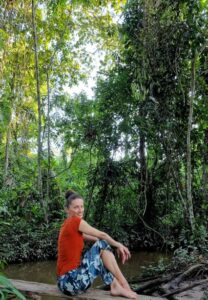The call of the Jungle
Part 1 – Peru Unveiled
“I feel an immense gratitude for being able to be in this place today, an indescribable gratitude for every step I’ve taken in my life that led me here, every person who has had the smallest impact on my life throughout all these years that I’ve been breathing,”
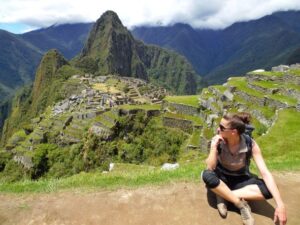
I whisper in tears, looking through a small oval window at the endless greenery through which a winding river flows, after three days and three nights, five flights and the sixth airport that I’m about to land in. With my head turned 90 degrees from my body, I breathe deeply and tremulously, as quietly as possible, not to disturb the passenger next to me. It’s not the first time I’ve cried on a plane, but so far, it’s always been on my way back home. Today, for the first time, I cry upon arrival.
These restless feet of mine have wandered through more than 70 countries and 80 states, and many of those places could be called holy for more or less well-known reasons. But none of the journeys could be called a holy journey. A journey of healing. A journey to the centre of myself. A journey on which I will be completely unavailable to the world and everything familiar for 40 days. I felt a call from the deepest parts of myself. A call that most people do not hear during their lifetime, but those who do cannot help but respond, no matter what the cost.
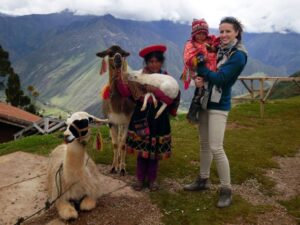
Capturing the Beauty and Spirit of the Andean Nation
This is not my first visit to Peru, I got to know it well several years earlier on my long journey through South America. As the plane descends, vivid pictures return to my mind. What a fascinating country, in every sense. Land of vibrant culture, rich history, stunning natural beauty, and amazing traditional cuisine. From the majestic Machu Picchu to the vibrant streets of Lima, there is no shortage of incredible experiences to be had in this 3rd by size and 4th by its population South American country.
Most known for being home to one of the world’s most iconic and well-preserved archaeological sites – the incredible Machu Picchu. Climbing the metallic blue stone to the 3,061-meter-high mountain above the Hidden City was my first ever mountain climb, accompanied by intense pain and the worst sunburns despite using SPF 50. And then, tears that whisper – it was worth everything! Standing high above the clouds, looking at one of the Seven Wonders of the World, stepping back in time to a place where the ancient Inca Empire once thrived. All of a sudden the sun was hidden by clouds from which the gentlest rain descended like balm on my burning skin. I am speechless. I am silent. I close my eyes to enjoy the moment. I listen to the wild Urubamba River, feeling the soft rain. As I open my eyes a rainbow appears. A representative of the Inca tribe flag, over the Lost City, the wild river, and the mighty Andes. Above me. It greets and welcomes me in one of the unforgettable moments that this incredible country has gifted me.
As I walked through the cobblestone streets of Cusco, former capital of the Inca Empire that was brought to an end in the 16th century, and observed its intricate stonework which seemed do defy gravity, I could feel the weight of history and tradition, and the presence of something larger than myself. There is a sense of reverence in the air, a feeling that this is a sacred place where the past and present are intertwined. The energy of Cusco is palpable, and it draws you in, inviting you to explore its mysteries. Perhaps it’s the towering presence of the Andes Mountains, the Sacred Valley that surrounds it, or the ancient Inca ruins, but there is something about this city that spoke to my soul in a way no other city did ever before. Cusco has been touched by something divine, and its spirit is a gift to those who seek it out.
I’ve spent several days exploring the Sacred Valley, its stunning landscapes and important Inca sites, like the colourful market in Pisac, the impressive ruins of Ollantaytambo or the small village of Chinchero – the birthplace of the rainbow. There is no better place to learn about the history and the rich cultural heritage of the region. For indigenous people the Sacred Valley is a place of great reverence and respect, where the wisdom of their ancestors is still honoured and celebrated. They believe that the spirits of their ancestors continue to protect and guide them, and that the land itself is a living, breathing entity that must be treated with respect and care. For me it was the best place to try delicious traditional cuisine like guinea pig – inaccessible in urban areas of Peru, alpaca, llama, quinoa, one of the thousand varieties of Peruvian potatoes or corn that grow in this rich and fertile valley and then enjoy Coca leaf tea, sweet warm Cacao, one of the best coffees in the world or delicious traditional Peruvian drink – Pisco Sour.
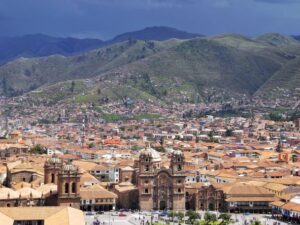
Echoes of the Past
The train ride to Aquas Calientes through the breath-taking nature where the Andes meet the Amazon and a walk along the Inca Trail through beautiful landscape of mountains and rivers, lush forests, and ancient ruins was an experience in itself. As was my visit to Salt mines in Maras, the unique place in the heart of the Andes Mountains. Peruvian salt embraces history like no other salt in the world. The mines, which have been in use since pre-Inca times, are still in operation today and are managed by local families who have been working in them for generations. They are located in a narrow canyon, and as I approached, I could see hundreds of small pools – “pocitos” – carved into the mountainside. The pools are filled with salty hot water that flows from an underground stream, and the salt is harvested by hand using thousands of years old traditional methods. As I walked through, I could see workers carefully using wooden tools to scrape the salt from the surface of the water. Each ”pocito“ yields around 150 kg of salt per month. The salt is then dried in the sun, creating a beautiful and sparkling white surface that is truly a sight to behold. An amazing souvenir for my friends and family.
I still remember the expression on the face of the native man who was steering the boat on Titicaca Lake, the highest navigable lake in the world. I was afraid of the sun reflection while getting on the boat and applied such a thick layer of SPF cream on my face that I looked like a geisha. But I didn’t care, the only thing I cared for were stunning views of the mountains and surroundings reflecting in the crystal blue water and learning about the unique way of life of the indigenous communities around the Sacred Lake. Titicaca has a great cultural significance as it is considered to be the birthplace of the Inca civilization. It is also an important ecosystem, supporting a diverse array of plant and animal life and is home to several species of fish and birds found nowhere else in the world.
The most beautiful colonial style architecture in South America I found in Lima, the capital of Peru, which is also a modern oasis. Its rich cultural heritage, the narrow cobblestone streets, historic centre, quaint plazas, exquisite museums, churches, parks overlooking long coastline and beaches, the bohemian neighbourhood Barranco known for its artsy, laid-back vibe and a vibrant cultural scene, and delicious cuisine like ceviche made with fresh fish from the Pacific Ocean are more than a good enough reason to visit.
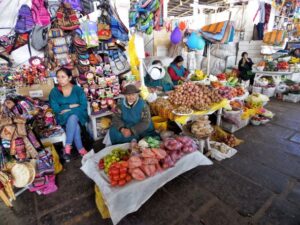
Amazon Illumination
As you can imagine, Peru left quite a profound impression on me. But there’s one place I’ve missed back then. The most important place for planet Earth. The centre of the Earth itself. And now, several years later, the wheels of the airplane are about to touch the runway that cuts through the endless greenery.
I descend from the plane with nothing more than a backpack on my already sore back, weeping, vulnerable, with my heart, soul and mind wide open, surrendered to God, the Universe, the Energy, guided by nothing but an inexplicable urge and pure love that I feel within me. As I stepped through the airplane door, before even setting foot on the stairs, I felt dazed. It was evening and the temperature was showing 37 degrees Celsius with 87 percent humidity. The next day I discovered that I had arrived on the hottest day of the year. The temperature in Pucallpa had been rising for days, and the air had become so saturated with humidity that it was unbearable. Everything was gearing up for the biggest storm I had ever witnessed in my life, a storm that delayed my trip deep into the rainforest for two days. In the Amazon, storms rage like few places on Earth and in that moment I began to understand why many indigenous cultures in South America believed that thunder and lightning were divine spirits and powerful gods.
As the indigenous man came for me with his pick-up truck to drive me deep into the jungle, thoughts were racing through my head. Am I sure about where I’m going?! Spending over a month in the middle of the jungle with people from a native tribe, sleeping in wooden huts covered with palm leaves, living their way of life, on a strict diet, bathing in plants, participating in their ceremonies, surrounded by endless wilderness?! There are no roads to the jungle, we travel through dust, mud, and deep water-filled pits. Around me just endless towering trees that stretch thousands of kilometres through nine countries. As we approached the village within the rainforest, a mix of unease and calm, anticipation and excitement alternated within me. I felt so deep then and there – on this trip I wouldn’t just experience a transformation like I did on every of my trips before, this time I’m about to experience my own rebirth…
